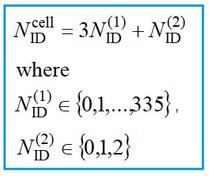5G NR SS Block: SS Burst vs. SS Block
Advertisement
This article dives into the specifics of the 5G NR SS Block, including its function, contents, and position within the 5G NR frame. We’ll also clarify the difference between an SS Burst and an SS Block.
Introduction to 5G NR Frame Structure
As depicted in Figure 1, a 5G NR frame has a duration of 10 ms. Similar to LTE, a frame is composed of 10 subframes, each lasting 1ms. Each subframe is further divided into 2μ slots.
A slot can contain either 14 (normal Cyclic Prefix - CP) or 12 (extended CP) OFDM symbols. All subcarrier spacing options use 14 OFDM symbols, with the exception of 60 KHz spacing, which supports both normal and extended CP types.

Figure 1: 5G NR Frame Structure
The number of slots per subframe depends on the value of μ:
- μ = 0: 1 slot per subframe
- μ = 1: 2 slots per subframe
- μ = 2: 4 slots per subframe
And so on. The number of slots per frame is ten times the number of slots per subframe. Therefore, when μ = 2, there are 40 slots per frame.
5G NR employs 4096 FFT points, which include 3300 data subcarriers for a maximum bandwidth of 400 MHz.

Figure 2: 5G NR Numerology
5G NR SS Block: Contents, Position, and Function
In the 5G NR downlink frame, SS blocks are transmitted to User Equipments (UEs) at regular intervals based on a defined periodicity (e.g., 5, 10, 20, 40, 80, or 160 ms). Multiple SS blocks are grouped within an SS burst.
A single SS block occupies 4 OFDM symbols in the time domain and 240 subcarriers in the frequency domain. Each SS block contains the following:
- PSS (Primary Synchronization Signal)
- SSS (Secondary Synchronization Signal)
- PBCH (Physical Broadcast Channel) with DMRS (Demodulation Reference Signal)
The SS blocks are organized within the first 5 ms of the SS burst. The maximum number (L) of SS blocks in a single burst depends on the frequency band being used.

Figure 3: 5G NR SS PBCH
The possible candidate SSB locations (L) within the SS Burst set are:
- L = 4: Up to 3 GHz
- L = 8: From 3 GHz to 6 GHz
- L = 64: From 6 GHz to 52.6 GHz (mmWave frequencies)

Figure 4: SS Block Transmissions in 5G NR
The Demodulation Reference Signal (DMRS) associated with the PBCH channel is used by the UE to estimate the Reference Signal Received Power (RSRP) based on the received SS blocks.

Figure 5: 5G NR SS Burst Periodicity
Figure 5 illustrates the periodic transmission of SS bursts (containing SS blocks) from the gNB (base station) to the UE, shown here with a 20 ms interval.
SS Burst vs. SS Block: Key Differences
In contrast to LTE, where the downlink frame carrying PSS and SSS signals is transmitted omnidirectionally, 5G NR transmits SS blocks using directional beams. The UE is aware of the location of these signals in the control channel.
Here’s a summary of SS block characteristics:
- PSS: Occupies 1 OFDM symbol.
- SSS: Occupies 1 OFDM symbol.
- PBCH: Occupies 2 OFDM symbols.
- SS Burst: Carries one or more SS blocks.
- SS Burst Set: Consists of one or more SS bursts.
- Transmission Periodicity: Periodic transmission (20 ms by default).
- Transmission Window: SSBs within an SS burst set are confined to a 5 ms window.
Advertisement
 RF
RF



